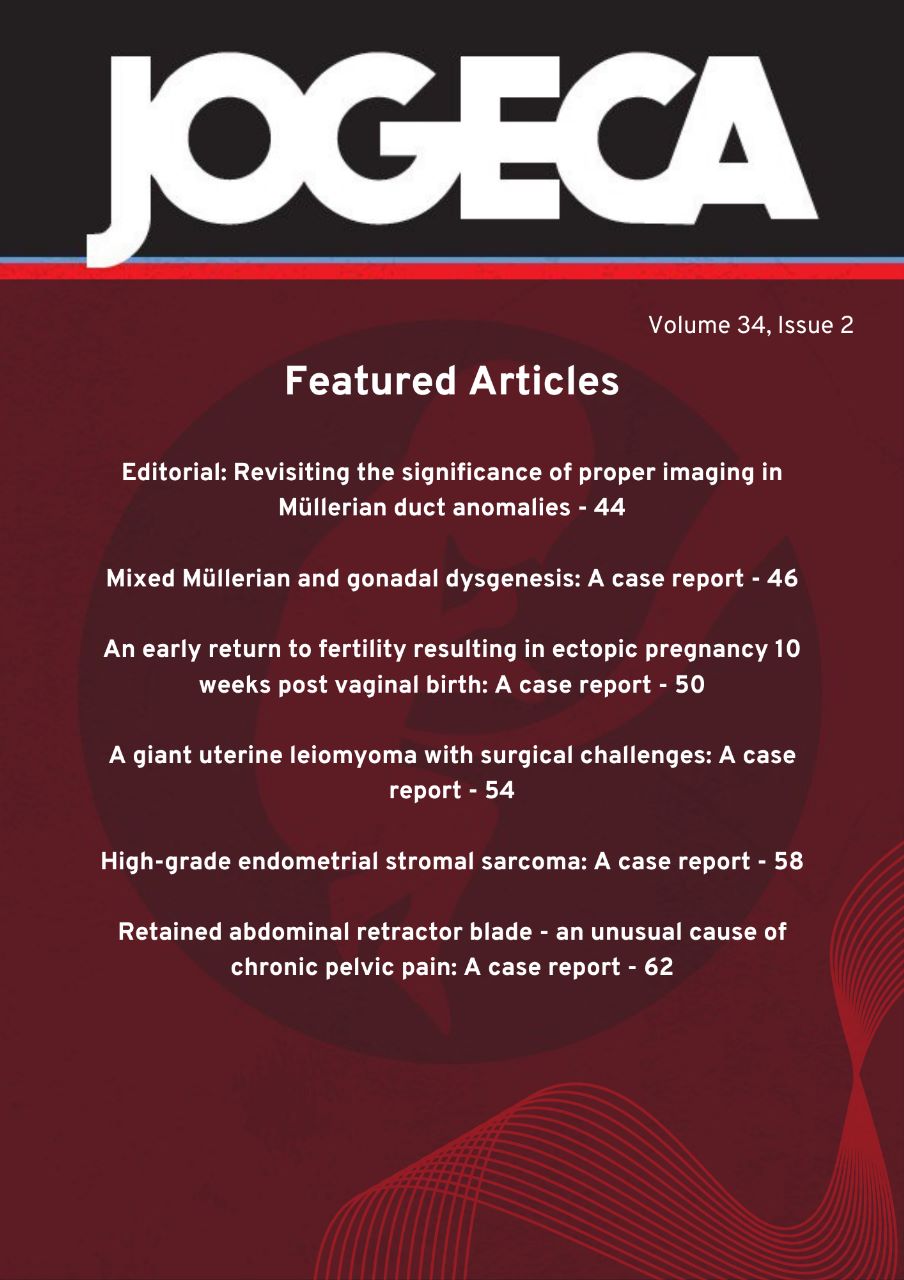47th KOGS Conference Abstracts
DOI:
https://doi.org/10.59692/jogeca.v35i1.32Abstract
Over the last three years, the rise of the SARS-CoV-2 (COVID-19) pandemic took the world by storm, derailing all paradigms and dimensions of function in titanic proportions. This had been accurately predicted to happen in Kenya as early as April 2020. This necessitated unique individual and systemic adaptations to minimize both the inherent risk of morbidity and mortality and the risk of losing the substantial gains that had been realized as expressed by the improvement in Kenya’s reproductive health indicators.
Over the last calendar year, there has been a dynamic shift in the areas of focus of research in reproductive health in Kenya. This is evidenced by the variations in the subthematic alignments of the submissions for the Kenya Obstetrical and Gynaecological Society Annual Scientific Congresses (KOGS ASCs) of 2022 and 2023. There was no loss in the previously realized increase in the number of submissions, reflecting consistency in the adoption of the culture of research (1), there have been substantial changes in the thematic distribution of the submissions (Table 1).
Table 1: Variations in subthematic areas of submissions for the Kenya Obstetrical and Gynaecological Society Annual Scientific Congresses in 2022 and 2023
Thematic area
Number of submissions
Deviation (n)
Deviation (%)
2022
2023
Adolescent and Pediatric Gynecology
5
3
-2
-0.4
Basic and Translational Science in Reproductive Health
0
3
3
N/A
Benign conditions in Gynecology
7
2
-5
-0.71
Family planning and contraception
5
2
-3
-0.6
Gynecologic oncology
12
9
-3
-0.25
Infertility and Endometriosis
12
10
-2
-0.17
Information Technology in Health
3
1
-2
-0.67
Maternal, Fetal, and Neonatal health
27
44
17
0.63
Minimal Access Surgery
6
4
-2
-0.33
Reproductive Health Commodities, Access, and Security
10
7
-3
-0.3
Urogynecology and Cosmetic Gynecology
6
12
6
1
TOTAL
93
93
0
0
The largest numeric deviation observed is a 63% increase in the number of submissions in the sub-thematic area of Maternal, Fetal, and Neonatal health. This may be indicative of a possible ‘return to the basics’ or may reflect a possible backlash from the previous disruptions in the provision of services and the rise of ‘self-care’ (2), all of which adversely affected the health-seeking behavior of patients with both acute (3) and chronic conditions (4). Concurrently, the largest percentage deviation was observed in the doubling of the submissions under the subthematic areas of urology and cosmetic gynecology. This may reflect the growth of these subspecialties.
As we continue to navigate through the COVID-19 pandemic, the journey to the future needs to begin with a critical approach toward addressing the disruptions and innovations in the reproductive health spaces, which is the collective focus of the 47th KOGS ASC.





